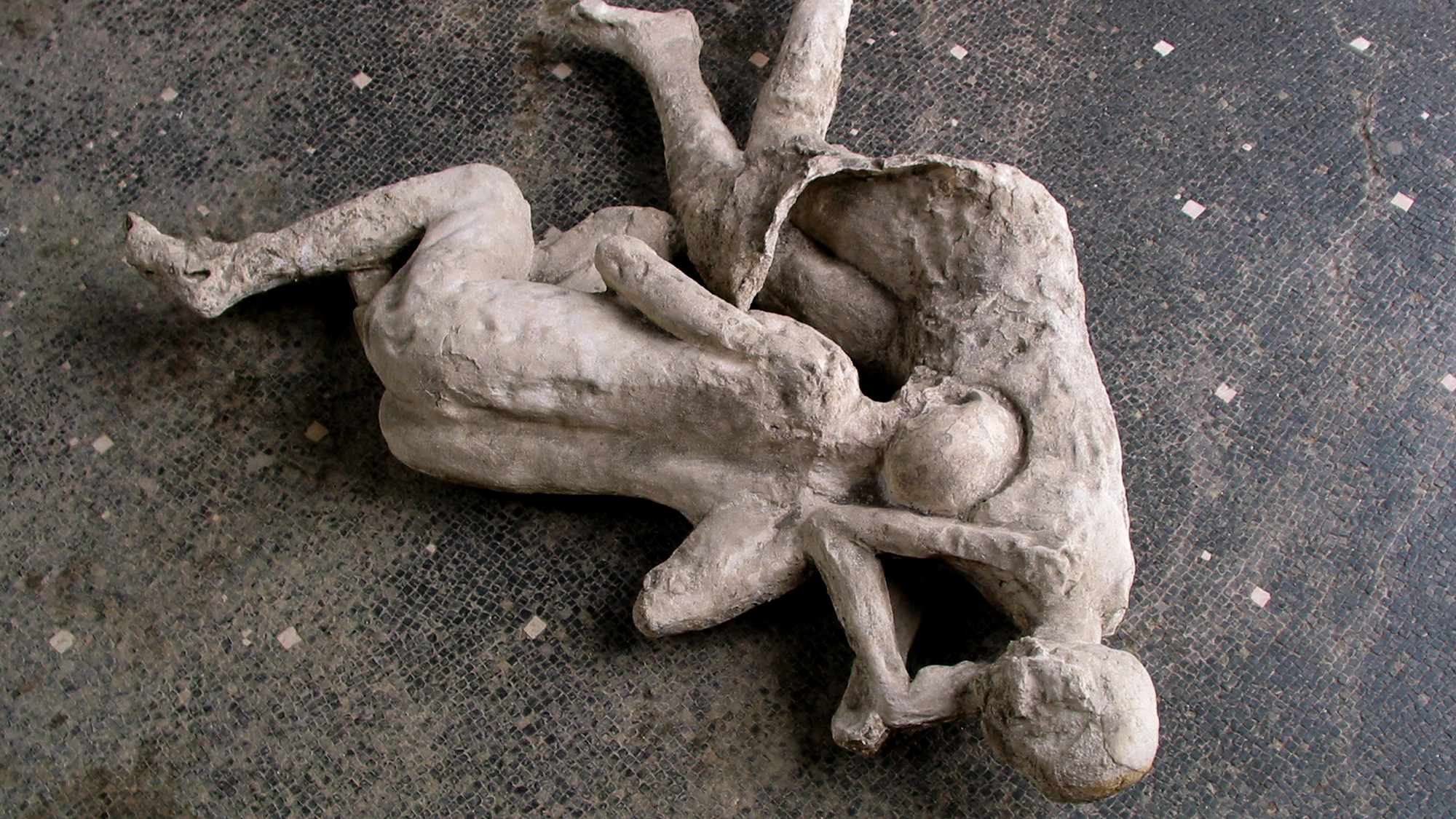

A new genetic analysis of 14 bodies recovered from Pompeii is casting doubt on some of the initial interpretations of their identities before the cataclysmic volcanic eruption. A team of archaeologists and geneticists used a new genomic analysis to find out more about who these individuals were. They ultimately found that their biological sexes and family relationships don’t match up with the initial interpretations. The findings are detailed in a study published November 7 in the journal Current Biology.
“This study illustrates how unreliable narratives based on limited evidence can be, often reflecting the worldview of the researchers at the time,” David Caramelli, a study co-author and archeologist at the Universita di Firenze in Italy, said in a statement.
[Related: Pompeii’s archaeological puzzles can be solved with a little help from chemistry.]
In 79 CE, the Somma-Vesuvius volcano system erupted in southern Italy. The earthquakes and violent eruption completely buried the inhabitants of the small Roman town of Pompeii. Volcanic ash covered and preserved many of the bodies. The remains of the town were initially discovered in 1599 and by the 19th Century, scientists began to uncover the remains and preserved several in plaster.
This new study probed the DNA evidence that has been taken from some of these bodies.
The team used the same strontium isotopes that were used to date the DNA samples to get a better understanding of the diversity and origins of Pompeii’s residents. The team extracted DNA from highly fragmented human skeletal remains mixed with the plaster casts that were used to preserve the bodies. They focused on 14 of 86 casts that are undergoing restoration, with the goal of using the DNA to learn as much as they could about these individuals. Their approach allowed them to accurately determine the genetic relationships, sex, and ancestry of those 14 individuals.

“The scientific data we provide do not always align with common assumptions,” study co-author and Harvard University geneticist David Reich said in a statement. “For instance, one notable example is the discovery that an adult wearing a golden bracelet and holding a child, traditionally interpreted as a mother and child, were an unrelated adult male and child. Similarly, a pair of individuals thought to be sisters, or mother and daughter, were found to include at least one genetic male. These findings challenge traditional gender and familial assumptions.”
[Related: ‘Violent’ earthquakes accompanied the infamous volcanic eruption that buried Pompeii.]
The genetic data revealed that these Pompeiians had diverse genomic backgrounds. They were primarily descended from a group of eastern Mediterranean immigrants. According to the team, this emphasizes the cosmopolitan nature of the Roman Empire. The findings also highlight the need for using genetic analysis and tools from other scientific disciplines to fully understand the past of Pompeii and beyond.
“Our findings have significant implications for the interpretation of archaeological data and the understanding of ancient societies,” study co-author and Harvard University archaeogeneticist Alyssa Mittnik said in a statement. “They highlight the importance of integrating genetic data with archaeological and historical information to avoid misinterpretations based on modern assumptions. This study also underscores the diverse and cosmopolitan nature of Pompeii’s population, reflecting broader patterns of mobility and cultural exchange in the Roman Empire.”